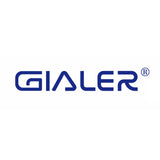RFID Elastic Wristbands, also known as Radio-Frequency Identification elastic wristbands, are wearable devices made from flexible and stretchable materials, such as silicone, fabric, or plastic, and incorporate RFID technology. RFID technology enables the wristbands to wirelessly communicate with RFID readers or scanners. These wristbands typically include an embedded RFID chip and an antenna.
The RFID chip within the wristband stores information and has a unique identification code. When brought within the proximity of an RFID reader or scanner, the wristband emits radio waves containing its stored data, which the reader captures and processes. This technology allows for various applications, including access control, identification, cashless payments, asset tracking, security, and more in a wide range of industries such as events, healthcare, hospitality, and retail.
The process of how RFID elastic wristbands work can be broken down into the following steps:
RFID Chip: Each RFID wristband has an RFID chip, which is a small integrated circuit that stores information. This information can include a unique identification number or other data relevant to the specific application.
Antenna: The wristband's antenna is connected to the RFID chip. The antenna is responsible for transmitting and receiving radio waves.
RFID Reader/Scanner: RFID readers or scanners are devices that emit radio waves and are used to communicate with RFID tags, such as those in the wristbands. These readers can be handheld devices, fixed installations, or integrated into access control systems.
Power Source: In some cases, the RFID chip and antenna may be passive, relying on the energy provided by the RFID reader to function. Other RFID wristbands have active RFID chips, which have their own power source (usually a battery) to enable longer read ranges and more robust communication.
Here's how the process works:
Activation: When the RFID wristband is brought within the proximity of an RFID reader, the reader emits radio waves at a specific frequency.
RFID Chip Response: The radio waves emitted by the RFID reader activate the RFID chip in the wristband.
Data Transmission: The activated RFID chip in the wristband sends a signal back to the reader. This signal contains the information stored on the chip, such as a unique ID number.
Data Capture: The RFID reader captures the signal transmitted by the wristband and processes the data. The captured data can be used for various purposes, depending on the application. For example, it may grant access, make a cashless payment, identify a person, or track an asset.
Authentication and Action: Once the data is processed, the system can take action based on the information received. For example, in an access control scenario, the system may unlock a door or grant entry if the wristband is authorized.
Benefits of RFID elastic wristbands include:
1. Efficient Access Control: RFID wristbands are commonly used for access control at events, hotels, resorts, and secure facilities. They provide a convenient and efficient way to grant or restrict access to authorized personnel or guests.
2. Cashless Payments: Many events and venues use RFID wristbands as a cashless payment method. This simplifies transactions, reduces the need for cash handling, and enhances the overall customer experience.
3. Enhanced Security: RFID wristbands can be programmed with encryption and security features to deter counterfeiting and unauthorized access. This is especially important in scenarios where security is paramount.
4. Ease of Use: The elastic design of these wristbands ensures they are comfortable to wear for extended periods. Their design minimizes the risk of loss and reduces the need for physical tokens or keys.
5. Durability: RFID wristbands are typically designed to be durable, waterproof, and resistant to wear and tear. This makes them suitable for use in outdoor events, aquatic settings, and other challenging environments.
6. Customization: Wristbands can be customized with various colors, logos, and designs to match the branding or theme of an event or organization. This customization can enhance the overall experience for attendees.
7. Convenience: RFID wristbands streamline processes by eliminating the need for manual checks, ticketing, or physical cards. This reduces waiting times and enhances the overall efficiency of an event or facility.
8. Data Collection and Analysis: RFID technology allows for data collection, enabling event organizers and businesses to gather insights about attendee behavior, preferences, and movement patterns. This data can be used for future planning and marketing strategies.
9. Multiple Applications: RFID wristbands are versatile and can be used for various purposes, including tracking assets, managing inventory, identifying patients in healthcare settings, and implementing loyalty programs in retail.
10. Reduced Costs: RFID wristbands can help reduce costs associated with printing and distributing physical tickets, as well as the handling of cash for payments. They can also reduce the risk of fraudulent activities.
11. Environmental Benefits: By reducing the need for paper tickets or physical tokens, RFID wristbands contribute to environmental sustainability by decreasing waste and promoting more eco-friendly event management practices.
12. Real-Time Monitoring: Event organizers and businesses can monitor the movement and behavior of attendees in real time, allowing them to respond quickly to changing conditions or emergencies.
Conclusion
RFID elastic wristbands offer the advantage of being comfortable to wear, durable, and resistant to water, making them well-suited for extended use in different environments. Overall, RFID elastic wristbands offer a convenient and efficient solution for a wide range of applications, simplifying processes, enhancing security, and improving the overall experience for both customers and businesses or event organizers.









